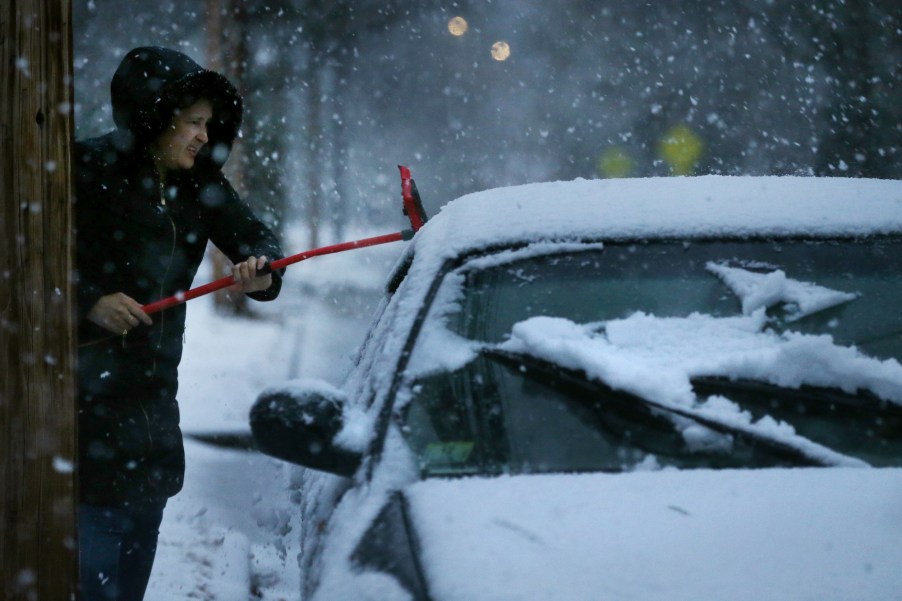
Easy Ways to Open Frozen Car Doors and Locks
‘Tis the season! Yes, it’s time for the holidays and hot cocoa. But wintry conditions are also here for many parts of the country. Snow, sleet, and sub-zero temps are expected in many states this winter. And no matter how beefy your snow tires or powerful your vehicle, you won’t leave your driveway if your car doors or locks are frozen shut. You’ll want to print out this list of maintenance tips and suggestions to help you open frozen car doors and locks without damaging your vehicle.
Tools to keep on hand unfreeze your car doors
It’s probably best to expect your car doors or locks to freeze this winter. Knowing there’s a possibility can help you prepare. Keep a scraper, preferably with a brush, outside and inside your vehicle. Sometimes just removing the snow from around the door can expose the jams enough to loosen the ice.
It’s also a good idea to have a portable lock de-icer on hand, either on you or in your home, Auto.com suggests. According to Bob Vila, a quick remedy for frozen car locks is to spray the de-icing solution directly into the lock, and you’ll be in the driver’s seat in no time.
What to do when you’re without a de-icer
If you find yourself unprepared without any tools, there are a couple of other ways to get into your vehicle. Try other entrance points, for example. One side of your vehicle might have been directly facing freezing rain, but the other doors may not be frozen. Before you panic, try all the doors, hatchbacks, and liftgates.
It might also help to apply pressure to the frozen door. Don’t yank or get too aggressive, or you could break the door handle. Instead, lean into the door and gently pull back a series of times. You might be able to break loose any door-jamming ice.
Household remedies in a pinch
If your doors or car locks are frozen and you’re in a pinch, consider household remedies. Silicone sprays or even cooking sprays can be useful if you can apply them to your car door’s rubber seal. WD-40 always works, and some even say petroleum jelly or hand sanitizer is helpful. But remember to use them only in dire situations. Frequent application of these chemicals can damage the rubber.
You can also pour warm water (not hot or boiling) around your door jams and on your locks to quickly melt ice. Some heating devices are also great for immediate entry. Don’t be afraid to run a power cord and use a household blow dryer if you have the time, Aceable suggests. And hard plastic items, such as credit cards, can be effective at scraping away ice without scratching your car doors.
Prevention is your best solution
Prevention is probably your best bet. If you have an opportunity to park indoors, do it. If only outdoor parking is available, consider covering your car with a tarp. Before the snow and ice hit too hard, inspect your car doors’ rubber seals and replace any damaged areas. Bonus tip: You can preserve your wipers by pulling them off the windshield before a snowstorm so that they don’t freeze to the windshield.
You can have the most aggressive snow tires or the most capable four-wheel-drive. But if you can’t open your car doors, you won’t be going anywhere anytime soon. Keep these tips handy, and do your best to prepare your vehicle for snow and ice this winter.


